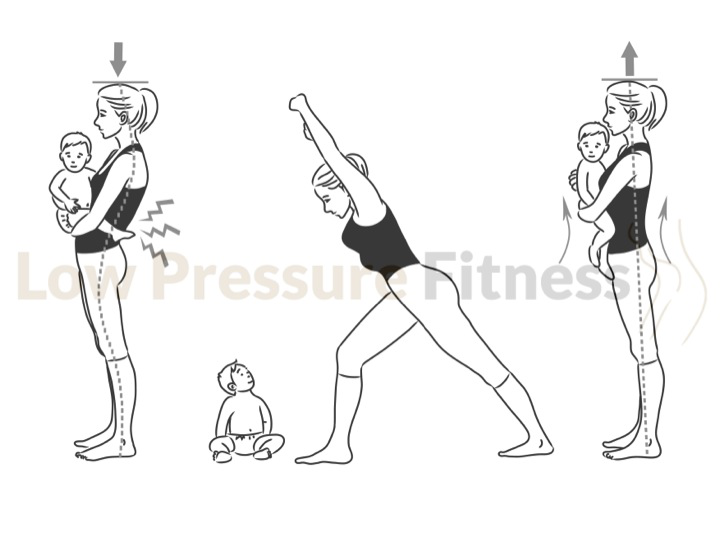Hypopressives is a form of Low Pressure Fitness, a global approach to training that integrates a postural and breathing technique with special attention to decreasing intra-abdominal pressure so we can train safely and prevent possible adverse consequences from systematic increased pressure.
Better Posture = better intraabdominal pressure management
A poor posture and lumbopelvic deficit can lead to pelvic floor pain or dysfunction. Suboptimal strategies for posture, movement and/or breathing can create a load transfer which can lead to pain, increase in intra-abdominal and pelvic pressure or breathing dysfunctions. With hypopressive techniques, you re-program your posture and eliminate bad postural habits. The exercises involve isometric and eccentric muscle actions that generate a global lengthening of the posterior myofascial chain, including the respiratory chain. Regular practice of hypopressive exercises aims to correct the existing myofascial restrictions and provides a better respiratory pattern.
The coordinated activity of the diaphragm, lumbar spine, abdominal wall and pelvic floor muscles influences postural control by regulating intraabdominal pressure and increasing the tension in the thoracolumbar fascia. The correct alignment of the pelvis and lumbar spine directly effects the co-activation of the core’s musculature. A habitual posteriorly tilted pelvis is thought to cause increased vertical loading on the pelvic floor muscles and increased risk for stretch weakness from repetitive activities that increase intraabdominal pressure (running, aerobics, crunches, weightlifting...) Hypopressive performance will directly affect the stabilizing muscle group of the spine and the abdominal wall muscles providing a new core structure. Trough specific global postural reeducation guidelines spinal muscles acquire the necessary local muscular endurance for physical activities while back pain decreases.
Small changes in the way we train can make a big difference! Hypopressive exercises are a new paradigm of core, posture and respiratory training. The smart training that has revolutioned Europe has landed in North America.

